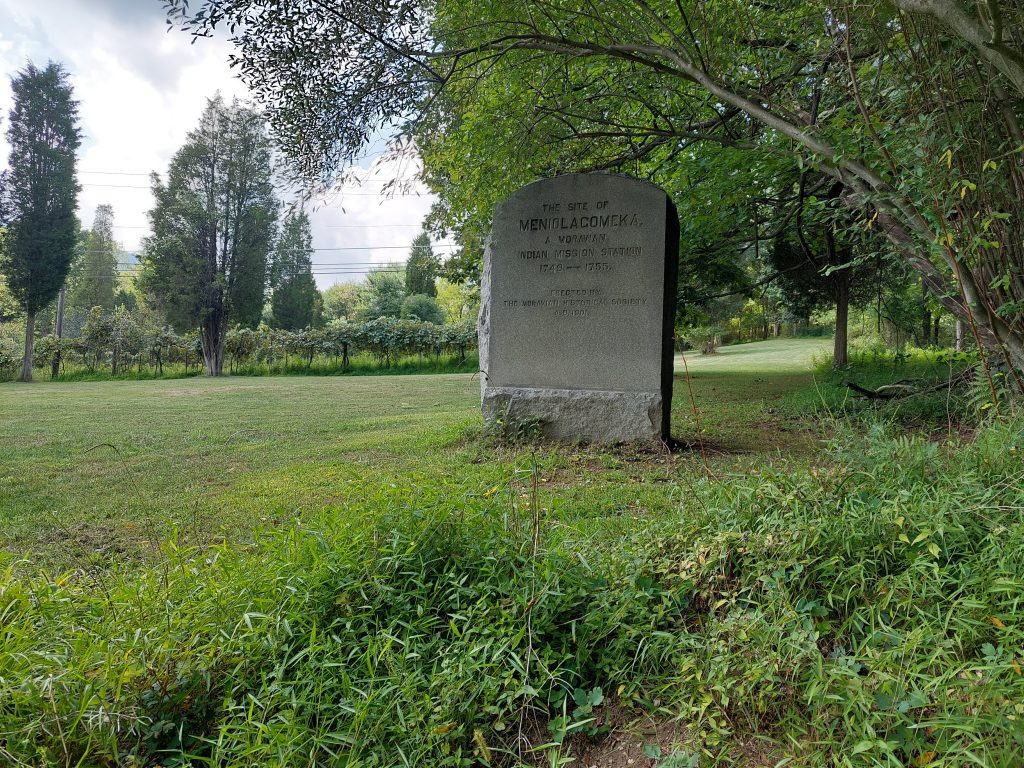I have a love-hate relationship with Paul A. W. Wallace’s Indian Paths of Pennsylvania. I love reading the individual chapters on each path — their descriptions, and the accounts of them in the letters and diary entries of early Colonial explorers, but any hard look at the specifics and the trails themselves become frustratingly vague. This is all the more frustrating because the information looks specific and authoritative enough, until you take that close look…
Some of this is because the original information is vague — nobody was tracking their steps with a GPS back then — so the actual trail location is not perfectly known, and partly it’s because the trails themselves are long gone (though some are at least partly followed by modern roads), so it’s hard to search them out without trespassing, but there also just seems to be some missing ingredient needed to define a trail network.
A few years ago I thought that this last part could be solved with a little bit of GIS detective work, so I started a QGIS project to define the trails and see about building a network, but I sort of ran out of steam — I basically foundered on the vagueness of the trail descriptions. I did one or two in the Lehigh Valley, and realized that the sleuthing needed was a lot more laborious than simple data entry, and the project languished after those first few paths.
I was thinking about all this again recently, and realized that there is a critical first step I ignored: the book serves primarily as an automotive guide, with detailed instructions for driving in the vicinity of each path. I also thought that if I broke the task down to a set of database tables, I could link these auto routes to their various paths and book chapters . (Some trail chapters actually describe multiple trails and subtrails, while some motorway descriptions continue across multiple chapters, so many-to-many relationships abound but that’s what databases are for. Furthermore, most of the trail chapters have a start and an endpoint, yet more data I can use to cross reference.)
This scheme fell apart within the first few trails. The very first trail, the “Allegheny Path,” has Philadelphia as the start point and “Pittsburg and Kittanning” as the endpoint — so which is the endpoint? Apparently neither, because the trail is only described as far as Harrisburg; the “Allegheny Path” chapter ends with references to several other trails (different chapters, in other words) heading West from Harrisburg as possible continuations. So OK, I can deal with this: my endpoints are really Philadelphia and Harrisburg, and I’ll stuff the rest of the info into my “description” column. (There is a second path listed in that first chapter, but it is little more than a historical aside and a reference to another path/chapter. This is going to get tricky.)
Luckily the motorway for the Allegheny Path is easy to follow. I used an open routing plugin to follow along a bunch of control points, and voilá I had my linestring. This ain’t so bad!
The very next chapter, I ran into motorway difficulties: the route description made no sense. Either the routes were not prepared with adequate ground-truthing (unlikely, though I was starting to feel uncharitable), or the roads (and their designations) had changed at some point in the 55 years since the book came out. This seems the more likely explanation, since I-80 goes right through the area in question, was only finished in 1970, and probably changed a lot of things in its wake. I actually found the Wikipedia article on the Bald Eagle Creek Path more useful.
So I’m back to deciphering and making judgement calls rather than strictly converting the information from one format to another, even for these road descriptions. I didn’t expect this project to be done in an afternoon, or even a week or so, but “going to take forever because I’m not really working on it” is now closer to my expectation.
(Note: I found that someone already took these paths and put them into a GIS, but it’s on PA-Share and that’s proved difficult to work with — and deliberately limited, unless you pay — so far. We’ll see…)
